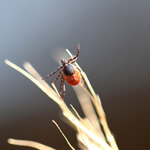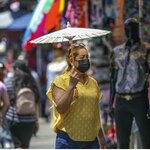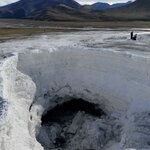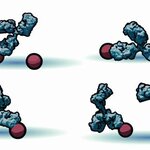Microbiology

When COVID-19 broke out, it was a US election year and that meant a lot of common sense gave way to politics. Democrats charged that then-President Trump was putting lives at risk by telling FDA to fast-track a vaccine, after insisting that closing airports to China was racist and xenophobic because the World Health Organisation had not declared a pandemic. Government insiders spread the word to debunk concerns about a nearby wet market in Wuhan and the safety of its two labs even though an employee had been convicted of selling lab animals in that wet market. China scrubbed its coronavirus…

Two cases of Yersinia pestis in human remains found in a mass burial in Charterhouse Warren in Somerset and one in a ring cairn monument in Levens in Cumbria show that the Plague may have erupted a few times in severe form across Europe, and it was even in England as far back as 2000 B.C.
In the 1960s, coronavirus was discovered as distinct from the common cold so future analyses may also find pandemics that occurred long before 2003, 2012, and 2019. 'The plague', as it became known in the Middle Ages, has previously been identified in Eurasia between during the Late Neolithic and Bronze…

If you’re a gardener, you may use peat moss - decomposed Sphagnum moss - in soil because it helps retain moisture.
Peatlands, wetlands characterized by a thick layer of water-saturated, carbon-rich peat beneath living Sphagnum moss, trees, and other plant life, cover just 3 percent of Earth’s land area but may store a third of all soil carbon. That's made possible in large part by microbes. Two microbial processes in particular — nitrogen fixation and methane oxidation — strike a delicate balance, working together to give Sphagnummosses access to critical nutrients in nutrient-depleted…

Two years before SARS-CoV-2, the Alongshan (ALS) virus emerged in China. It was alarming because it was found to be a member of the flavivirus family along with the devastating tickborne encephalitis (TBE) virus, which can cause inflammation of the brain and of the linings of the brain and spinal cord, and bacteria leading to the infectious Lyme disease (borreliosis).
It was discovered after patients bitten by ticks suffered from fever and headaches, the typical symptoms of a TBE infection, but no antibodies against the TBE virus or its genetic material could be detected in the…

Whole Foods and other high-priced alternatives like Farmer's Markets sell imagery of pretty, thin people carrying bountiful produce, but the icky reality is that, unless it is canned or frozen, most food purchased rots quickly.
It is nature at work. Rot caused by microorganisms spoils half of all food harvested. The strange good news is that because plants also volatile organic compounds into the environment, science can detect those and tackle plant disease faster, which will prevent food loss.
A new paper via Hebrew University of Jerusalem details the success of a biological sensor…

The omicron subvariant known as BA.5 was first detected in South Africa in February 2022 and spread rapidly throughout the world. As of the second week of July 2022, BA.5 constituted nearly 80% of COVID-19 variants in the United States.
Soon after researchers in South Africa reported the original version of the omicron variant (B.1.1.529) on Nov. 24, 2021, many scientists – including me – speculated that if omicron’s numerous mutations made it either more transmissible or better at immune evasion than the preceding delta variant, omicron could become the dominant variant around the world…

Eukaryogenesis is the point at which animal and plant cells separate from bacteria. In animal and plant cells, tubulin forms microtubules which are critical to their internal organization, because they support the cell, giving it structure, shape, and internal organization.
Because it is so essential to the cell, uncovering the origin of tubulin would be a remarkable step in understanding how the complex cells found in animals and plants diverged from the single cells of bacteria.
A new study says it has discovered a missing link between bacterial cells and animal and plant cells. They named…

Some areas on Mars are extremely salty, very cold, and have only a hint of oxygen - just like Earth. Yet even in the permafrost of Lost Hammer Spring in the Nunavut territory of Canada’s High Arctic, researchers have found microbes that have never been identified before.
Using genomic and single cell microbiology methods, they examined their metabolisms and found that the microbial communities found living in Canada’s High Arctic can survive by eating and breathing simple inorganic compounds of a kind that have been detected on Mars - methane, sulfide, sulfate, carbon monoxide, and…

In 1347, the Bubonic or Black Plague first entered the Mediterranean via trade ships transporting goods from the territories of the Golden Horde in the Black Sea.
The disease tore through Europe, the Middle East and northern Africa, in some cases claiming up to 60 percent of the population. It resurged throughout the next 500 years.
The origins of the Black Death have long been debated, because it is not a disease of humans, the Yersinia pestis bacterium survives within wild rodent populations across the world, in so-called plague reservoirs. A new study pieced together complete ancient…

A new mode of how antibodies navigate the surface of pathogens like coronaviruses compares the migration of these pathogen hunters to the random movements of a child on stepping stones.
Antibodies are often thought of as Y-shaped proteins but perhaps a more accurate way to envision them is to flip the picture upside down and regard antibodies as walking stick figures, stepping on antigens. Those two characteristic “Y” branches function as legs of sorts.
They mark their target pathogen by planting their “feet” on antigens — small molecules scattered like stepping stones in various patterns on…